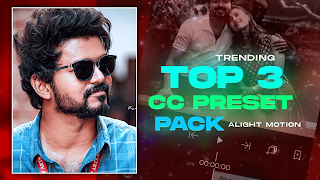TOP 3 Cc Presets Pack
Top 3 Cc Presets
hey guys jill here for premiere basics a weekly series where we teach you all the ins and outs of adobe premiere pro, last week adobe released a brand new feature that lets you color grade your footage with just one click of a button currently, it is only available within the beta version of premiere pro
so first let's open up the adobe creative cloud app and move to the beta apps menu then download the beta version of premiere after it's installed open up the beta app and you'll notice that the import menu is already different, but that's something that we've talked about in a previous video which you can see by clicking the link in the top right corner now
i'm going to import some, footage which will be some log footage that we've shot and some stock clips from story blocks that already have a decent color grade we're now going to color grade these clips to get some nice looking colors to start color grading move to the window menu and select the lumetri color panel if you have never color graded before let me give you a quick introduction within the lumetri panel, we have multiple tabs the first one is the basic correction tab from here we can make as the name indicates basic adjustments to our contrast and exposure but also the temperature of your shot.
next is the creative tab from here you can add luts which you can technically, also do in the basic correction tab but if you apply it here you can still adjust stuff later on in the basic corrections, in the creative tab you can also add sharpness vibrance and saturation next up is the curved step from here you can use the curves to control exposure and colors but in a more advanced way you can also play around with the hue saturation, and luma controls to control specific colors on your shot next is the color wheels and match tab and here you can add specific colors to either the shadows mid-tones or highlights, next is the hsl secondary tab which you can use to make selections of specific colors which is an ideal way to create better skin tones for example and lastly we have the vignette tab which is basically, to create a vignette obviously but you have clicked on this video to see the brand new one-click color grade feature in premiere so let's now wait any longer.
when you go back to the basic correction, step you will see a new button which says auto tone now if you click this premiere will apply intelligent auto corrections to your footage and this is all done with the sliders of the basic correction step which means that afterwards you can still have full control over it and change anything if needed so why is this so useful well for beginner video editors this is a fast and easy way to apply a quick and nice looking color grade to your footage as a start you can then use for example the color wheels.
and results actually look pretty damn great so i can't wait for adobe to release it officially for everyone to use it i hope you enjoyed this video and learned something new and if so make sure to hit the like button turn on post notifications and of course subscribe to the channel and feel free to share this video with your friends or on your socials i'll see you again next week with a new tutorial and as always stay creative.

























